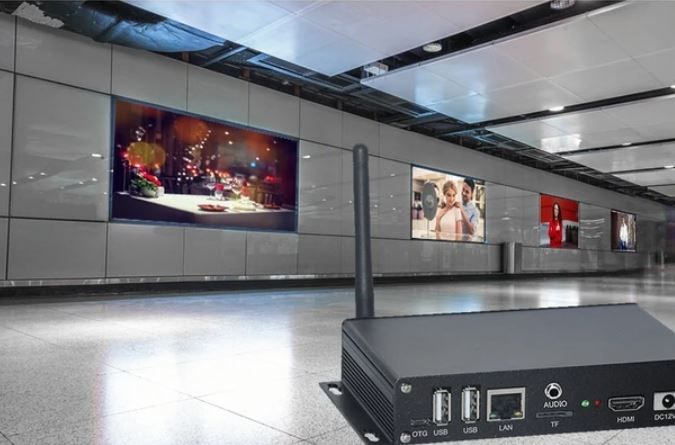The Ultimate Guide to Digital Signage Players

Strong 8k brings an ultra-HD IPTV experience to your living room and your pocket.
In today's digital age, digital signage players have revolutionized the way businesses communicate with their audience. Whether you run a small retail store or manage a network of displays across a multinational enterprise, a digital signage player is a critical tool for delivering eye-catching content. This guide dives into the complexities of digital signage players, explaining their types, uses, and the essential features you need to know for effective deployment.
What is a Digital Signage Player?
A best digital signage player is a hardware device that manages and displays content—such as images, videos, and interactive media—on screens, typically for advertising or informational purposes. Acting as the brain of a digital signage system, the player ensures that the correct content is delivered at the right time to the desired audience.
These players come in various shapes, sizes, and capabilities, which can range from plug-and-play USB sticks to sophisticated media boxes. They are designed to work with content management systems (CMS), providing the flexibility and control needed to schedule and update content easily.
Types of Digital Signage Players
1. Standalone Digital Signage Players
Standalone players operate independently and are perfect for small businesses or single-screen setups. They often support SD cards or USB sticks, where content is manually loaded onto the player. This type is suitable when simplicity and reliability are key, as it works even in locations without constant internet access.
2. Networked Digital Signage Players
Networked digital signage players are connected via Ethernet, Wi-Fi, or 4G, allowing for remote management and real-time updates. This type is ideal for large-scale deployments across multiple locations, such as retail chains, hotels, or educational institutions. With networked players, users can control and schedule content centrally, ensuring a consistent brand message.
3. Cloud-Based Digital Signage Players
Cloud-based players integrate seamlessly with cloud-based CMS platforms, providing maximum flexibility and scalability. These players are managed through a web interface, allowing users to make instant updates from anywhere. This type is ideal for businesses that need to adapt content quickly, such as those running promotions or events.
4. Interactive Digital Signage Players
Interactive players support touchscreens and allow users to engage directly with the display. These players are often used in settings like shopping malls, museums, and kiosks to create an immersive and user-driven experience.
Essential Features of a Digital Signage Player
1. Compatibility and Integration
The best digital signage players integrate smoothly with various CMS platforms, making it easy to schedule, update, and manage content. Compatibility with different file formats, such as images, videos, HTML5, and live feeds, is crucial for ensuring that content is displayed accurately.
2. 4K and High-Resolution Support
As the quality of displays continues to improve, 4K support is becoming a standard requirement for digital signage players. High-resolution content is vital for ensuring that viewers get an immersive and visually appealing experience. Ensure your player can support these demands, especially if your screens are in high-traffic areas where quality matters.
3. Internet Connectivity
Network connectivity—whether through Wi-Fi, Ethernet, or cellular data—is essential for a networked signage player. It enables remote content updates and the ability to manage a fleet of players. For locations with unreliable internet, failover options or offline playback can be beneficial features.
4. Remote Management and Monitoring
Remote management is a must-have feature, especially for large deployments. It allows you to update content, monitor player performance, and diagnose issues without being physically present. Many cloud-based solutions offer remote monitoring and even predictive maintenance, helping prevent downtime.
5. Scalability
Digital signage solutions should be scalable to match your business needs. Whether you have one screen or hundreds, choosing a player that can grow with you is important. Cloud-based players are especially well-suited for scalability, allowing new screens to be added quickly.
How to Choose the Right Digital Signage Player for Your Needs
1. Consider the Environment
The location where you plan to install your digital signage is crucial for choosing the right player. Players in outdoor environments require rugged hardware that can withstand harsh weather conditions. Meanwhile, those in temperature-controlled environments, such as offices or malls, do not need as much protection.
2. Content Requirements
Evaluate your content type. If you plan to showcase interactive content, such as touch-enabled maps or interactive advertisements, make sure to choose a player that can handle touchscreen inputs and process such content efficiently.
3. Budget Considerations
The cost of digital signage players can vary significantly. Standalone players are generally more budget-friendly compared to cloud-enabled ones. However, consider the value of remote management features and scalability, which may justify the cost of a more advanced player for larger setups.
4. Content Management Software Compatibility
The CMS is integral to managing digital signage content. Some players are tied to specific CMS platforms, while others offer more flexibility. Choosing a player that integrates easily with the software you intend to use is key to streamlining operations.
Popular Digital Signage Players in the Market
1. BrightSign Players
BrightSign is known for its reliable, purpose-built digital signage players. Their lineup caters to a range of needs, from simple image playback to highly interactive displays. BrightSign players are often preferred for their robustness and versatility, featuring 4K support and compatibility with a variety of CMS platforms.
2. Raspberry Pi-Based Players
Raspberry Pi players are popular in the DIY digital signage space due to their affordability and versatility. While not as powerful as commercial-grade players, Raspberry Pi can handle basic content well and is highly customizable, making it a cost-effective choice for smaller deployments.
3. Chrome OS Players
Chromebox devices, powered by Google’s Chrome OS, are increasingly used for digital signage. They offer a cost-effective, cloud-managed solution with built-in security and automatic updates. Chrome OS players are particularly favored for ease of use and the reliability of Google's ecosystem.
4. Android-Based Players
Android-based players offer flexibility and are widely available at various price points. These players are suitable for a range of applications, from retail to education. One of their key advantages is compatibility with numerous Android apps, making them a versatile choice for businesses that need quick and easy implementation.
Setting Up Your Digital Signage Player
1. Hardware Setup
Start by connecting the player to the display via HDMI or VGA, depending on the device. Ensure that power sources are secure, and if network connectivity is required, connect via Ethernet or Wi-Fi. For outdoor installations, make sure that the player is adequately protected in an enclosure to prevent damage.
2. Software Installation
Most digital signage players will need to have software installed, either locally or by connecting to a CMS platform. Follow the setup wizard to configure initial settings such as network connectivity, content synchronization, and playback preferences.
3. Content Scheduling
Once connected, use the CMS to create and upload content, and schedule when and where it should play. With networked or cloud-based players, this can be done remotely, providing flexibility in managing content.
Benefits of Using Digital Signage Players
1. Enhanced Customer Engagement
Digital signage allows businesses to engage customers with dynamic content that is visually compelling. Players capable of high-resolution video and interactive elements can create experiences that draw customers in and keep them engaged for longer.
2. Real-Time Updates
Digital signage players allow you to change the content instantly, which is especially useful for promotions or emergency information. The ability to manage content remotely means that messages can be kept relevant without delay, improving communication and responsiveness.
3. Cost-Effective Advertising
Once the initial investment is made, digital signage is a cost-effective method of advertising. Updates do not require the production of new physical materials, meaning content can be continuously adapted to maximize its impact.
Future Trends in Digital Signage Players
1. AI and Personalization
Artificial Intelligence is shaping the future of digital signage, enabling players to deliver personalized content based on viewer demographics or behavior. This trend is especially relevant for retailers who wish to enhance customer experiences through targeted advertising.
2. IoT Integration
The Internet of Things (IoT) is increasingly being integrated into digital signage solutions. IoT-enabled players can interact with other smart devices, creating opportunities for connected, data-driven advertising.
3. Edge Computing for Improved Performance
With edge computing, digital signage players can process data locally, which reduces latency and ensures smoother playback. This is particularly valuable for applications requiring real-time content, such as live data feeds or audience-driven interactive experiences.
Conclusion
Choosing the right digital signage player is crucial for the success of your digital communication strategy. By understanding the different types of players, their features, and how they align with your specific needs, you can maximize engagement and create an impactful visual experience. As the digital signage industry continues to grow, staying informed about the latest trends and technologies will ensure your system remains at the forefront of effective communication.
Note: IndiBlogHub features both user-submitted and editorial content. We do not verify third-party contributions. Read our Disclaimer and Privacy Policyfor details.





